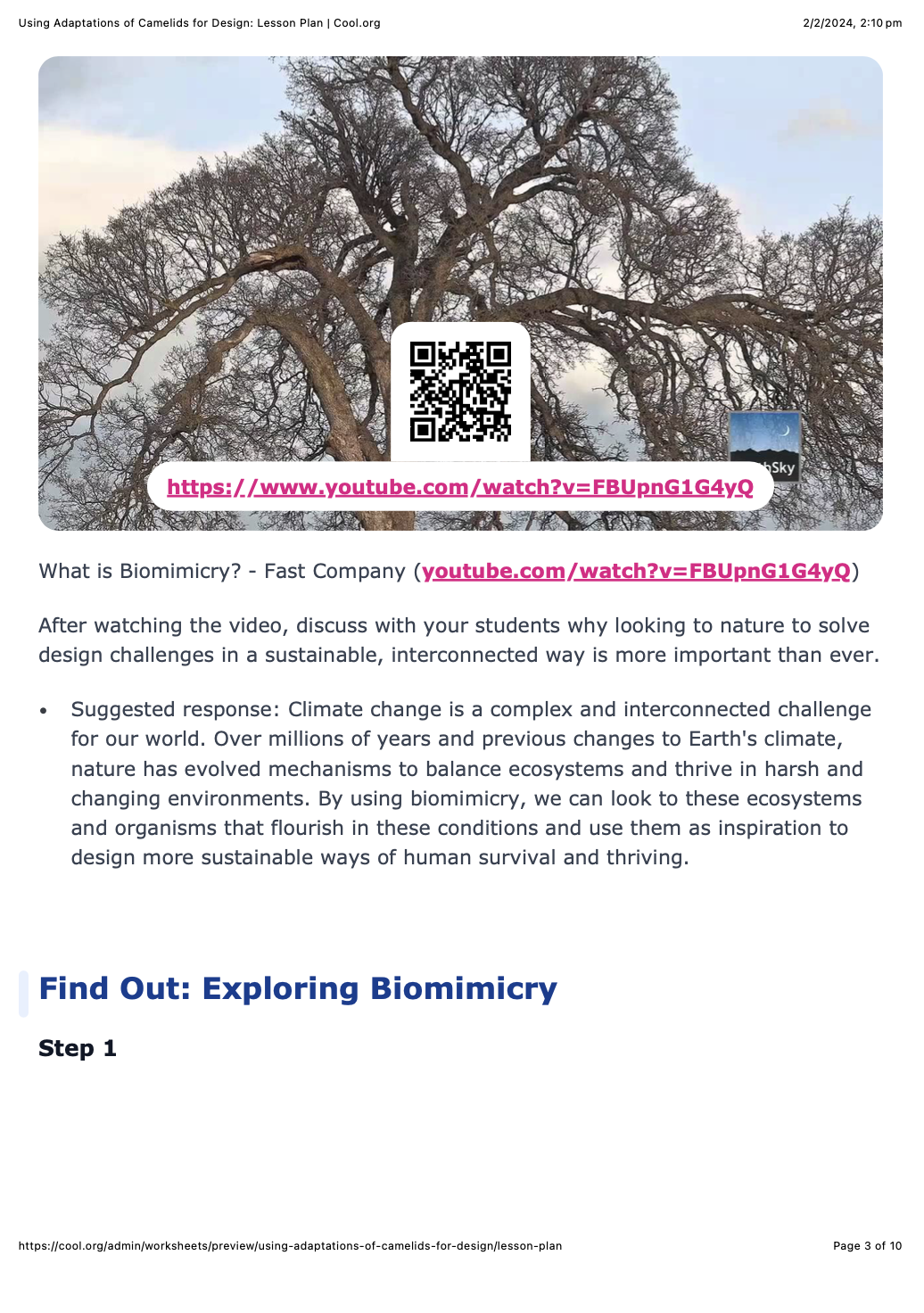Lesson summary
Students will explore the concept of biomimicry and investigate how particular structural features and behaviours of camelids and other animals enable their survival in harsh environments, as well as provide humans with inspiration for sustainable designs for a thriving world.
Learning intentions:
Students will...
- understand how the structural, physiological, and behavioural features of camels and their relatives enable their survival in harsh environments, as well as explore how biomimicry can enable humans to thrive in these environments.
Success criteria:
Students can...
- describe how features of camels and their relatives enable their survival in harsh environments
- define the concept of biomimicry
- give examples of human designs using biomimicry
- design an innovation using adaptations of camelids for human use.
Lesson guides and printables
Curriculum links
Select your curriculum from the options below.
Lesson details
Skills
This lesson is designed to build students’ competencies in the following skills:
- critical thinking
- collaboration
- curiosity
- problem solving
Curriculum Mapping
Australian Curriculum (v9.0) content description:
Year 5 & 6 Science
- examine how particular structural features and behaviours of living things enable their survival in specific habitats (AC9S5U01).
Year 5 & 6 Design and Technology
- explain how people in design and technologies occupations consider competing factors, including sustainability in the design of products, services and environments (AC9TDE6K01).
Relevant parts of Year 5 & 6 achievement standards:
Students can explain how the form and behaviour of living things enables survival. Students can also explain how people design products, services and environments to meet the needs of communities, including sustainability.
NSW Syllabus outcomes: ST3-4LW-S
General capabilities: Critical and Creative Thinking
Cross-curriculum priority: Sustainability
UN Sustainable Development Goals
- Target 15.1: By 2020, ensure the conservation, restoration and sustainable use of terrestrial and inland freshwater ecosystems and their services, in particular forests, wetlands, mountains and drylands, in line with obligations under international agreements.
Resources Required
- Device capable of displaying audio-visual material
Additional Info
This is an original Cool+ lesson.
Level of teacher scaffolding: Medium - some explicit teaching may be required, facilitation of research and discussion.



Welcome back!
Don't have an account yet?
Log in with:
Create your free Cool.org account.
Many of our resources are free, with an option to upgrade to Cool+ for premium content.
Already have an account?
Sign up with:
By signing up you accept Cool.org's Terms and Conditions(Opens in new tab) and Privacy Policy(Opens in new tab).